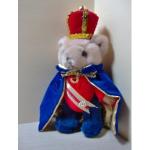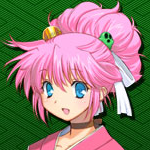 Battle Plaptypus, on 24 April 2011 - 04:00 PM, said:
Battle Plaptypus, on 24 April 2011 - 04:00 PM, said:
Then book 9 starts and we have no fucking clue what is going. This to me is not goo storytelling. As stand alone books the Malazan Book of the Fallen is amazing, probably the best books on the market in my opinion, but as a series, as a whole, the series is a mess. Normally the point of a series is to build up the final book where all the threads come together and the reader gets to see what the Author was always building towards. There's a sense of tension and progress. There isn't really much of this at all in the last books because Erikson has kept us too much in the dark. As such I really didn't feel as excited during the last couple of years as I did back when I thought Erikson actually had it all wrapped up as tight as DG, MOI and HOC felt.
I don't think there's much difference in how MoI and DoD start out. Both times we begin with a familiar Malazan army in a weird situation where they are now friends with the enemies from the previous books (Brood's army and the Letheri, respectively), and then they set out towards a mysterious unknown evil, etc etc. But there's some pretty major differences in how each book (and TCG following on DoD) go about it:
In MoI, we have the added perspective of Capustan facing the Pannion wrath, which sets the Domin up nicely as a true force to be reckoned with and actually makes it seem dangerous. We also get Toc's journey showing what things are like in the Domin and adding that extra bit of grey morality because the Pannions are not all so bad. In DoD and tCG, the only perspective inside Kolanse is the twelve FAs themselves, and while there is a bit of dissenting opinions between them, they all still seem pretty much straightforward evil.
In MoI, we have PoVs from WJ, Paran and Korlat and we see meetings within the command tents. We see the commanders discovering the Malazan ruse, arguing about plans and hidden motivations. We have a very clear speech from Dujek about how the Malazans know damn well that the CG is behind the Pannion Domin but they are treating it like a normal dominion and hoping the Ascendants will deal with that part of it. In contrast, from RG to tCG, all meetings consist solely of Tavore telling everyone else what to do. There is nothing given of motivations, of overall strategy, of true purpose. The only dissent is Blistig repeatedly complaining and being ignored. In turn, all the screentime that would go towards conflict and Kallor-esque hidden motivations within Tavore's army are given over completely to marines complaining and the romantic troubles of Brys/Havanat/Lostara/Skulldeath/Badan Gruk/Ruthan Gudd. The only dissent in the army is the Grey Helms, of which we get 1 PoV, 3 named characters and nothing shown on-screen.
Both books have their own uber-bads, the undead K'ell and the FA respectively, with Pannion himself thrown in at the end of MoI. DoD's handling of the encounters with the FA is just not as interesting as the handling of the K'ell. Every FA is more or less taken out by a super-good character. The methods differ, but it is always a case of the super-good character attacking the uber-bad and winning. MoI handled it much more interestingly, with the K'ell whooping Itkovian's butt before the Kron arrived out of nowhere to beat them. Then in the final convergence, it appears to be the same with the Kron once again appearing to destroy the K'ell who are beating the alliance, only for another reversal to occur in Itkovian paralyzing the Kron, which in turn is later followed by another reversal when the wolf gods reunite and the Kron finally go about their business.
There's a lot more of these comparisons I can do, like how the CG's reversal of personality was much less believable than Pannion's, but the last one I really want to mention is the changes of setting, especially with the convergences.
MoI has:
-big armies in open-plains fighting west of Capustan and outside Coral
-Urban street-to-street and in-building fighting in Capustan and the BBs inside Coral
-Aerial combat between the Moranth and condors, with waves of air-to-ground cusser bombing
-mountainous forest defense between the BBs and the Pannion forces
RG has:
-dense forest fighting
-small town fighting
-a bit of urban street-to-street fighting in Letheras
-open plains fighting between the Letheri and Awl
TtH has:
-slaughter inside a temple
-open-plain fighting in Dragnipur
DoD has:
-open plains fighting between Malazans and KCN, then between KCCM and KCN
TCG has:
-open plains fighting between a lot of different forces
-one mountain-pass battle
The variety of the clashes in the books after RG are simply not as varied as the previous ones. Granted there are personal clashes I didn't list, but most of those do not make as much of impact because of the smaller scale (with Rake vs Dassem being perhaps the only exception) of the event. It's just harder to grab hold of the audiences' attention when a whole book consists of walking across a plain, then a dry plain, then another plain, only to fight an enemy on a giant plain. The setting has a huge impact on how the battle is fought, and the different settings of conflicts in MoI, tBH or RG leads to lots of different types of battles, while every battle in DoD and tCG is just giant hordes flowing over an equal or smaller other force (with the Redbolts battle being the lone exception).

 Help
Help















